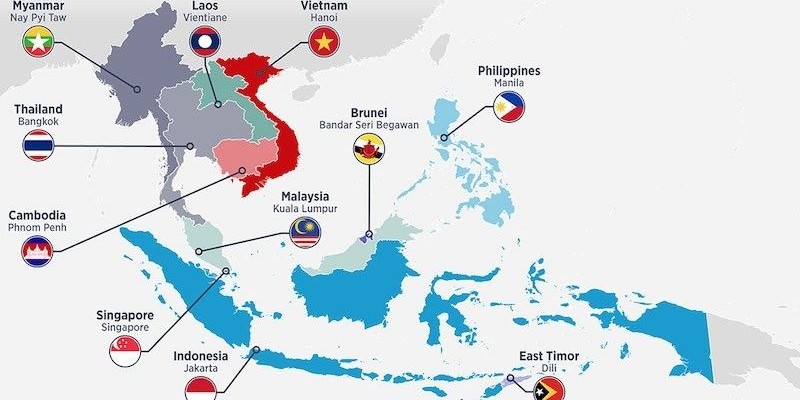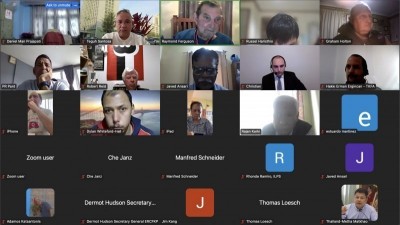Southeast Asia Should Not Be Reduced to Proxy War Theatre for U.S.
Ri Jong Su, an international affairs analyst, released the following article under the title "Southeast Asia should not be reduced to a proxy war theatre for the U.S." on May 24:
A raging wind of the new Cold War raised by the U.S. is displacing the warm air in the Southeast Asia region.
In January, the U.S. Navy's amphibious assault ship Makin Island appeared in Singaporean waters to resume the joint military exercises after an interval of two years. From late February to early March, the Cobra Gold joint military exercises, largest-ever in 10 years, were staged in Thailand, followed by the Balikatan joint military exercises in April, conducted in the South Sea of China involving a huge armed forces of over 12 000 U.S. troops in the Philippines and the first-ever live-shell firing drill in this region.
In the year 2022 alone, the number of military exercises staged by the U.S. armed forces in the South Sea of China reached more than 100 times and their reconnaissance activities marked a sharp increase of more than 1 000 times. And the deployment period of the U.S. nuclear carrier strike groups increased from 4 to 6 days in 2021 to more than 10 days. Moreover, U.S. nuclear carrier, a giant steel monster which is as high as a 23-storey building and as large as four football fields put together, appeared in Thailand on April 24 for the first time in more than 10 years.
What should be paid attention to is that the U.S. military infiltration, which had been confined mainly to joint military exercises with individual countries and the provision of military equipment, is now leading to the formation of a new alliance sphere linking its junior allies like Japan and Australia with Southeast Asian countries.
At the (two+two) diplomatic and defence authorities' talks with the Philippines on April 11, the U.S. agreed to expand the multilateral marine security activities with its “like-minded companions" in the South Sea of China and to boost cooperation with AUKUS. It also officially took up the issue of establishing the three-party cooperation mode- either of the U.S., the Philippines and Japan or of the U.S., the Philippines and Australia - during the Philippine president's visit to the U.S. from April 30 to May 4.
Military cooperation between countries should be welcomed when it is aimed at promoting peace and stability in those countries and regions, but the U.S. seeks other intention.
After the Second World War, the U.S. which had fattened on aggression and war, regarding it as an ideological prop, the "manifest destiny" given by God, to invade and annex other countries, has put other countries on the altar of proxy wars in creating and maintaining a unipolar world where the U.S. is playing the role of "MP" and "judge".
The U.S. has put spurs to establishing the triangular military alliance with Japan and south Korea under the "crescent plan", which is aimed at forming a "semi-lunar encirclement sphere" from Japan to south Korea, Taiwan, the Philippines, South Vietnam, Thailand and Pakistan against socialist countries, from late 1953. Meanwhile, it set up various forms of security alliance one after another including ANZUS in 1951, SEATO (Southeast Asia Treaty Organization) in 1954 and CENTO (Central Treaty Organization) in 1955. Such customs are now carried forward by QUAD and AUKUS.
Under the baton of the U.S., NATO, , is continuing its "Eastward advance" on the continent of Europe to press Russia, much like a tank free from braking. The U.S.-led "Westward advance", which is leading to Taiwan and Southeast Asia through Japan, south Korea and Australia, is being made in real earnest in the Asia-Pacific region. In this situation, Japan decided to open the liaison office of NATO at home on the recommendation of the U.S., which clearly proves that the "pincer of east and west", sure to be led to the building of "Asian version of NATO" is now entering the stage of execution.
All these destabilizing acts show that the U.S. is striving to revive the specter of "Nixon Doctrine" of making Europeans fight with Europeans in Europe and Asians with Asians in Asia.
The present era is that of independence, and no region in the world, to say nothing of Southeast Asia, wants to become a theatre of proxy war for the U.S. The reality clearly proves that the U.S. is the ringleader burying seed of distrust, antagonism, confrontation and conflict, quite contrary to the common desire of the Southeast Asian countries aspiring after peaceful environment and stable economic development. It is also none other than the U.S. that is the chieftain driving the whole region into extreme instability by inviting a war.
The countries in the Southeast Asia should heighten vigilance against the U.S. moves to turn the region into the theatre of proxy war for maintaining its hegemonic position, and oppose and reject them, thus fulfilling their responsibility and role in defending genuine peace, stability and justice.






